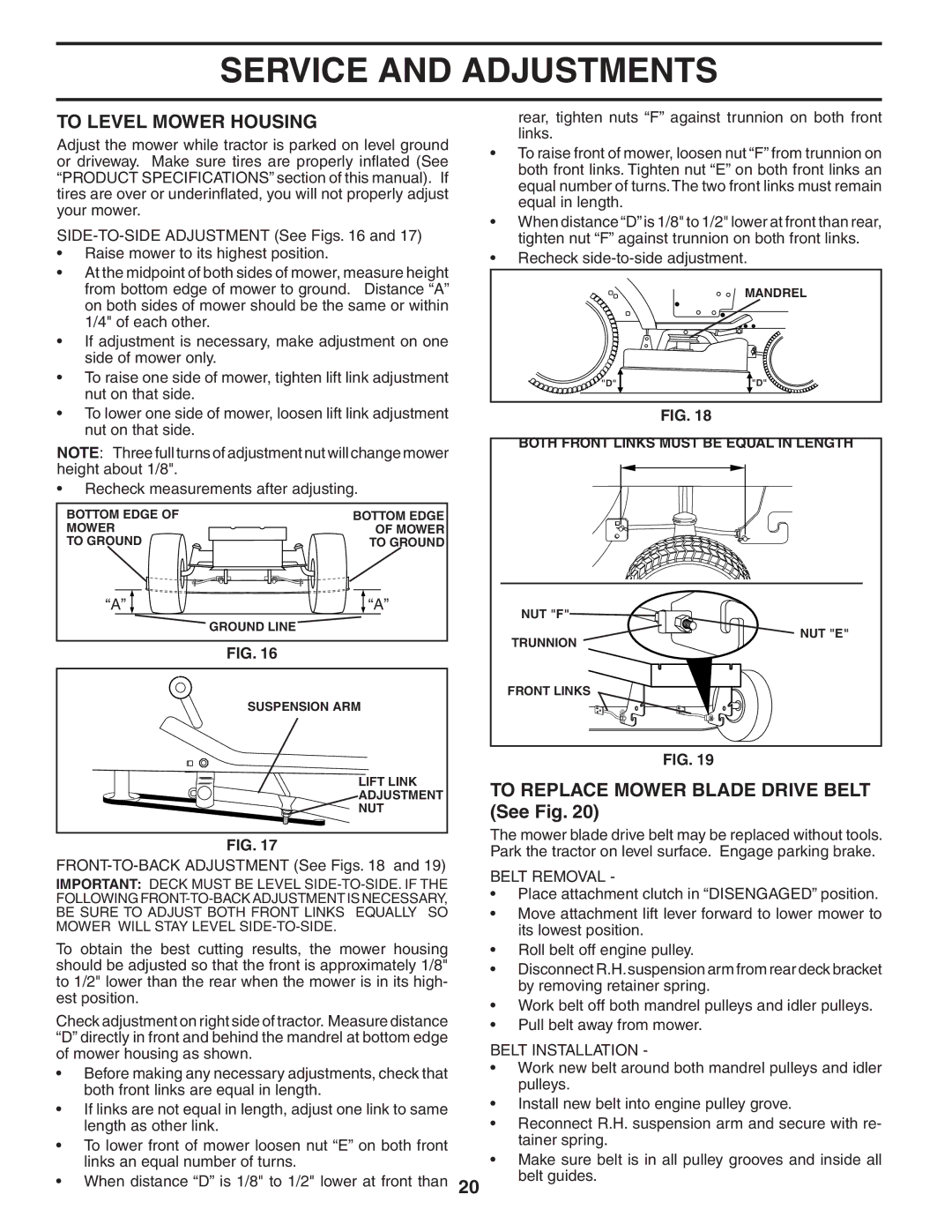184071 specifications
The Weed Eater 184071 is a powerful and efficient string trimmer designed for homeowners and landscapers alike. Equipped with a robust 17-inch cutting width, it offers a wide swath for trimming grass and weeds, making lawn maintenance a quicker task. The lightweight design, weighing just around 10 pounds, ensures the trimmer is easy to maneuver, reducing strain during prolonged use.One of the standout features of the Weed Eater 184071 is its innovative bump feed spool system. This design allows users to easily advance the line without having to stop and manually adjust it. By simply bumping the trimmer head on the ground, the user can release more line, ensuring a continuous and efficient trimming experience. This feature not only saves time but also enhances productivity, especially for larger yards.
The engine of the Weed Eater 184071 utilizes a 25cc two-stroke power plant that delivers reliable performance while maintaining fuel efficiency. This engine type is known for its capability to generate high torque, providing users with the power required to tackle tough overgrown areas with ease. Additionally, the trimmer’s engine is designed with reduced emissions in mind, aligning with environmental standards and promoting a greener approach to lawn care.
Comfort and ergonomics are crucial aspects of the Weed Eater 184071. The trimmer is equipped with a comfortable and adjustable handle that allows users to find their ideal grip, enhancing control and reducing fatigue. Furthermore, the lightweight nature of the tool means that it can be used for extended periods without causing undue stress on the body.
In terms of versatility, the Weed Eater 184071 is compatible with various attachments, allowing it to perform multiple functions beyond just trimming. This feature transforms the trimmer into a multi-tool that can handle different landscaping tasks, including edging and brush clearing, making it a valuable addition to any homeowner’s toolkit.
Overall, the Weed Eater 184071 is a well-rounded choice for those seeking a reliable and efficient solution for lawn care. With its combination of power, ease of use, and functionality, this string trimmer stands out as a leading option for maintaining a well-groomed yard. Whether managing a small garden or a larger property, the Weed Eater 184071 is designed to meet a variety of landscaping needs effectively and efficiently.

